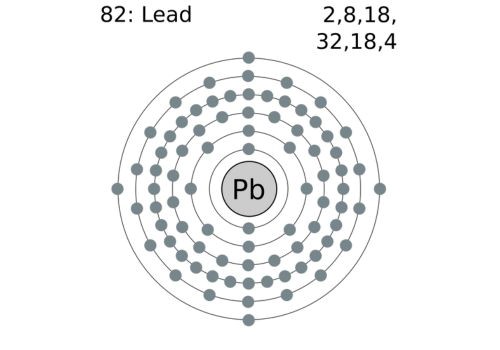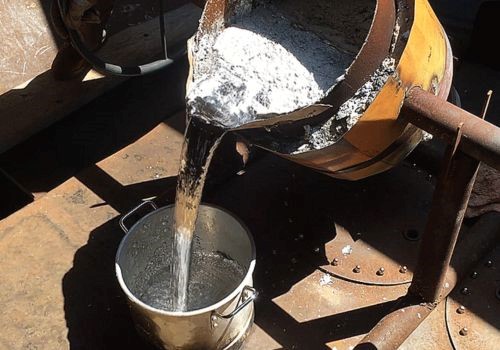Lead is a popular material in today’s metal fabrication. However, one fundamental facts you must know is the melting temperature of lead.
At what temperature does lead melt, and what affects the melting point? Well, these are the fundamental facts we shall explore in this guide.
What is the Melting Point of Lead?
The melting point of Lead is 327.5°C which is equivalent to 621.5°F or 600.65K. This is a relatively low melting point that can be attributed to the fact that Lead metal is easy to work with in terms of casting, soldering or even recycling.

Melting and Boiling Point of Lead
The melting point of lead is 327.5°C. On the other hand, lead’s boiling point is relatively high – approximately 1749°C or 3180°F.
The huge difference between the two variables shows that lead, in its liquid form, is highly stable across a wide temperature range.
Factors Affecting Lead Melting Point
Several factors impact the melting point property of lead. Here is a list of some of the notable ones:
- Purity
Pure lead has a standard melting point of 327.5°C. However, the presence of other materials and elements can lower that value and have an impact on its characteristics and applicability.
- Alloying Elements
You can improve the unique abilities of lead depending on their application by combining it with other metals. Some of these elements can either increase or decrease the melting point of lead. An example is antimony which when alloyed with lead, improves its hardness and slightly elevates its melting point.
- External Conditions
Some external variables such as pressure can also shift the melting point of lead such that an increase would raise the melting point of lead. But such changes are often very small and we can safely ignore them in most practical applications.
Comparing The Melting Point of Lead to Other Metals
Here is a simple table that shows you how the melting point of lead compares to those of other metals:
| Melting point of lead | 327.5°C / 621.5°F / 600.65K |
| Melting point of gold | 1064°C / 1947.2°F / 1337K |
| Melting point of bronze | 950°C / 1742°F / 1223.15K |
| Melting point of palladium | 1554.9°C / 2830.82°F / 1828.05 K |
| Melting point of copper | 1085°C / 1984°F / 1358.15 K |
| Melting point of Silver | 961.86°C / 1763.24°F / 123.95K |
| Melting point of steel | Varies around 1370°C / 2498°F /1643.15K |
| Melting point of iron | 1538°C / 2800.4°F / 1811K |
| Melting point of aluminum | 660.3°C / 1220.54°F / 933.45K |
Process of Melting Lead Metal
Lead has to undergo a step-by-step melting process to give it the form that you can use for your application. Here is how you can go about it:
- Get a furnace that can be heated up to 327.5°C. The preparation should also involve lead pieces, a crucible, tongs, and safety equipment before beginning the process.
- Place the lead into the crucible and apply heat gently by using a heat control apparatus to avoid overheating.
- It will convert to liquid after attaining its melting point. Ensure that it’s well melted before going to the next step.
- Using tongs and protective gear, pour the molten lead in a controlled manner inside your prepared molds to cool.
- After cooling and solidifying, you can remove them from the mold and apply the necessary finish such as polishing or refining.

Melting Different Grades of Lead
Because they differ in composition, different grades of lead have different melting points. Let us briefly go through some of them:
- Pure Lead: it has no additives or alloys and melts at 327.5°C or 621.5°F
- Lead-Antimony Alloy: because lead has been compounded with antimony, it melts at a higher temperature
- Lead-Tin Alloy: generally has a low melting point range of between 183-255°C or 361-491°F based on the composition
Importance Of Lead Melting Point In Various Industries
The melting point is important in various industry applications such as:
- Lead-Acid Batteries
They employ the use of lead due to their relatively low melting point, a fact that makes it easy to manufacture and recycle the batteries. Lead can be readily shaped to deliver the desired performance while not being complicated to manufacture.
- Radiation Shielding
Lead has a high density meaning it has the capability of blocking radiation hence commonly used as a radiation shield. Its low melting point enables it to be easily formed into sheets or bricks used as shields against X-rays and gamma rays in hospitals.
- Plumbing And Soldering
We commonly use lead-based solders in electronics and plumbing applications. This is because their low melting point permits the creation of a strong joint without interfering with sensitive components.
- Ammunition
Being a heavy metal, lead has a good density that can be used to manufacture bullets. You can easily cast it into the desired bullet size with antimony added to enhance its hardness.
Wrap up
Clearly, you can see that pure lead melts at 327.5°C. This temperature is critical since it help you know the right fabrication temperature and effects on lead alloys.




